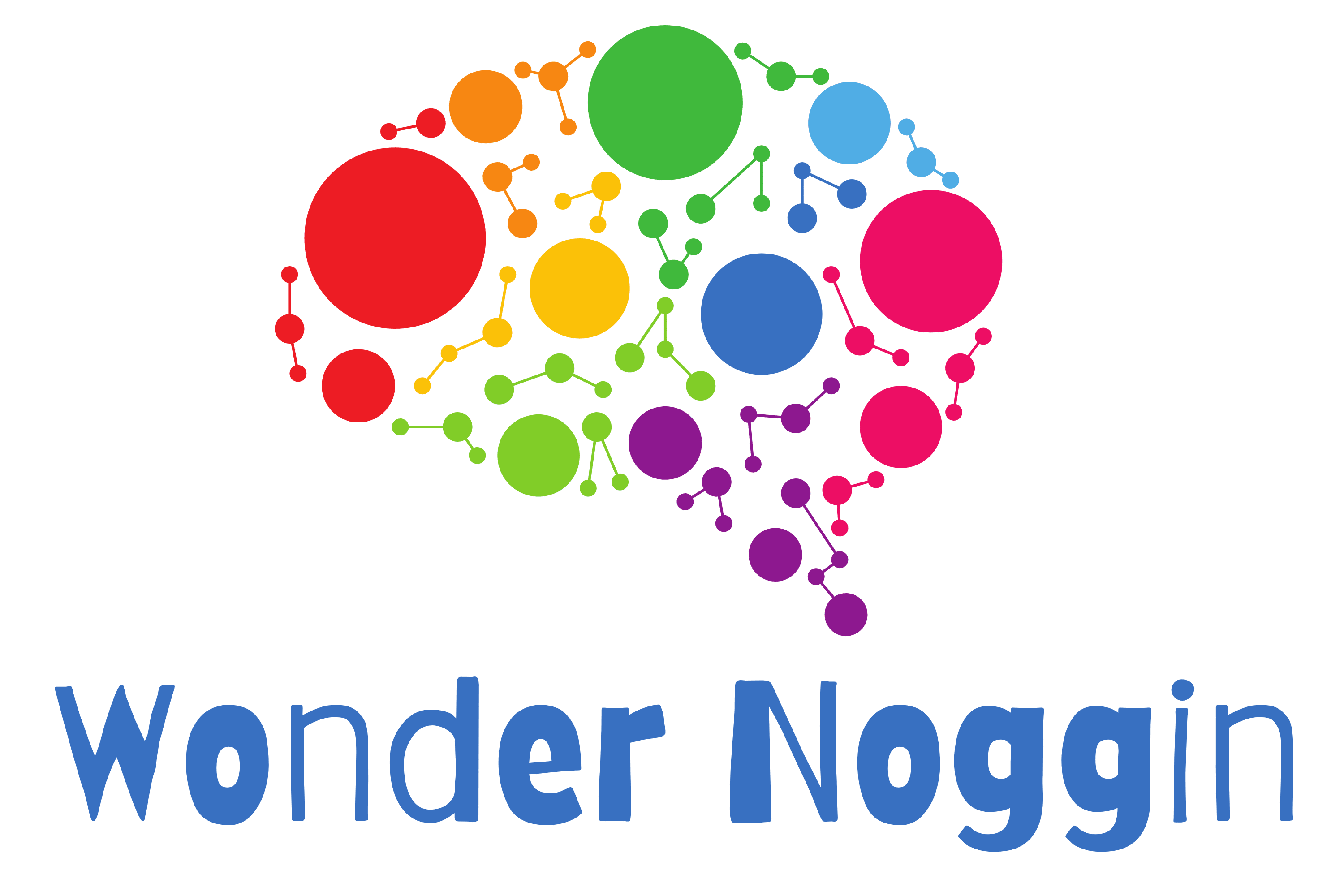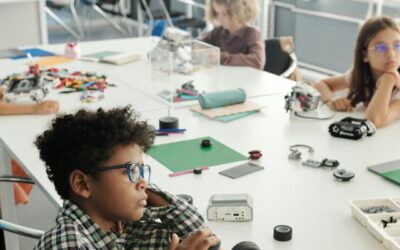Hands-on learning is a powerful educational approach that engages children through active participation and real-world experiences. It’s a method that transforms abstract concepts into tangible, memorable lessons, allowing kids to learn by doing rather than just listening or observing.
You’ve probably noticed how quickly children absorb information when they’re actively involved in a task. That’s because hands-on learning taps into their natural curiosity and desire to explore. By incorporating this approach into your child’s education, you’ll help them develop critical thinking skills, boost their creativity, and improve their problem-solving abilities. From simple science experiments to interactive art projects, there are countless ways to make learning fun and effective for kids of all ages.
What Is Hands-On Learning for Kids?
Active learning for kids is an educational approach that engages children through active participation and direct experiences. It’s a method that goes beyond traditional teaching techniques, allowing kids to interact physically with the subject matter.
Definition and Approach
Experiential learning involves learning by doing rather than passive listening or reading. This experiential approach, also known as learning-by-doing or project-based learning, allows children to actively explore and manipulate objects or ideas. It’s particularly effective in STEM (Science, Technology, Engineering, and Mathematics) subjects, where abstract concepts can be challenging for young minds to grasp.
Physical Interaction
In hands-on learning, children use their senses to engage with the material. They might:
- Count with physical objects
- Sort items by color or shape
- Build structures with blocks
- Conduct simple science experiments
This tactile engagement helps solidify abstract concepts, making them more concrete and easier to understand.
Engagement and Fun
Hands-on activities are inherently more engaging and enjoyable for children compared to traditional teaching methods. By incorporating elements of play and exploration, this approach taps into a child’s natural curiosity and desire to discover. It’s an effective way to introduce complex STEM concepts to young learners, even as early as 5 years old, through age-appropriate activities and books.
The Science Behind Hands-On Learning
How Hands-On Learning Impacts the Brain
Hands-on learning has a profound impact on the brain, particularly in the development of critical thinking skills and problem-solving abilities. When students engage in hands-on activities, their brains are actively processing information, making connections, and creating new neural pathways. This process, known as neuroplasticity, allows the brain to reorganize and adapt in response to new experiences.
Research has shown that hands-on learning activates multiple areas of the brain, including the sensory cortex, motor cortex, and prefrontal cortex. This multi-sensory approach to learning helps to strengthen neural connections and improve communication between different brain regions. By engaging in hands-on activities, students are not just passively receiving information; they are actively constructing knowledge, which leads to a deeper and more lasting understanding.
Moreover, hands-on learning has been shown to increase the production of dopamine, a neurotransmitter that plays a key role in motivation, pleasure, and reward processing. This can lead to increased engagement and motivation in students, as they experience a sense of accomplishment and satisfaction from their hands-on learning experiences. When students feel rewarded for their efforts, they are more likely to stay motivated and continue exploring new concepts.
The Learning Process: From Exploration to Understanding
The learning process is a dynamic journey that involves multiple stages, from initial exploration to deep understanding. Hands-on learning plays a critical role in this process, as it allows students to explore, experiment, and discover new concepts and ideas in a tangible way.
The first stage of the learning process is exploration, where students are introduced to new materials, tools, and concepts. Hands-on learning activities, such as project-based learning and hands-on projects, provide students with the opportunity to engage with these new concepts directly. This stage is crucial for developing critical thinking skills and problem-solving abilities, as students learn to navigate and manipulate their environment.
As students progress through the learning process, they begin to develop a deeper understanding of the concepts and ideas they are exploring. Hands-on experiences and hands-on learning environments offer students the chance to apply what they have learned, reinforcing their understanding and solidifying their knowledge. This application phase is where theoretical knowledge is transformed into practical skills.
Finally, the learning process culminates in reflection and evaluation, where students reflect on what they have learned and evaluate their own understanding. Hands-on learning activities, such as hands-on projects, provide students with the opportunity to reflect on their learning journey and identify areas for further exploration and development. This reflective practice is essential for continuous improvement and lifelong learning.
Benefits of Hands-On Learning for Children
Hands-on learning offers numerous advantages for children’s educational development. This approach enhances cognitive abilities, improves engagement, and provides multi-sensory experiences that promote effective learning.
Cognitive Development and Skill Enhancement
Hands-on learning significantly boosts cognitive development and skill enhancement in children. It allows kids to gain knowledge through direct experience, which is more effective than passive learning methods. This approach helps children develop functional skills, such as fine motor skills, by engaging in activities like cutting, sticking, sorting, and manipulating objects. These activities strengthen hand muscles, improve accuracy, and enhance the ability to perform real-world tasks like writing and tying shoelaces. For example, STEM books for 5 year olds often include interactive elements that encourage children to practice these skills while learning about science, technology, engineering, and math concepts.
Improved Engagement and Motivation
Hands-on learning increases children’s engagement and motivation in the learning process. By actively participating in educational activities, kids become more invested in their learning outcomes. This approach taps into children’s natural curiosity and desire to explore, making complex concepts more accessible and enjoyable. For instance, math books for kids often incorporate hands-on activities like counting objects or solving puzzles, which make abstract mathematical concepts more tangible and engaging.
Multi-Sensory Learning Experience
Hands-on learning provides a multi-sensory experience that caters to different learning styles. By engaging multiple senses simultaneously, children can process and retain information more effectively. This approach is particularly beneficial in STEM subjects, where abstract concepts can be challenging for young minds. Hands-on activities allow children to see, touch, and manipulate objects, reinforcing their understanding of complex ideas. For example, activities that demonstrate what STEM means through practical experiments or projects can help children grasp these concepts more easily than traditional teaching methods alone.
Incorporating Hands-On Learning at Home
Hands-on learning at home provides children with immersive experiences that enhance their understanding of various concepts. By creating an environment that encourages active participation, you’ll help your children develop crucial skills while making learning enjoyable.
Creating an Enriching Environment
An enriching environment for hands-on learning includes open-ended materials and interactive learning stations. Set up a dedicated space with:
- Building blocks, LEGOs, and construction sets
- Art supplies like paints, clay, and craft materials
- Science kits and simple experiment materials
- Math manipulatives such as counting cubes and sorting objects
- STEM books for 5 year olds and math books for kids
Organize these materials in easily accessible containers, allowing children to explore independently. Rotate items regularly to maintain interest and introduce new learning opportunities.
Encouraging Exploration and Curiosity
Foster a sense of wonder and curiosity in your children by:
- Asking open-ended questions about their observations
- Providing real-world examples of concepts they’re learning
- Engaging them in everyday activities like cooking or gardening
- Introducing STEM (Science, Technology, Engineering, and Mathematics) concepts through play
- Encouraging them to hypothesize and test ideas
Use hands-on activities to explain what STEM means in practical terms. For example, build simple machines or conduct basic experiments to demonstrate scientific principles.
Balancing Guidance and Independence
Strike a balance between guiding your children and allowing them to learn independently:
- Offer clear instructions for structured activities
- Allow free play with open-ended materials
- Provide support when needed, but encourage problem-solving
- Celebrate both successes and failures as learning opportunities
- Gradually increase complexity as children master basic concepts
By incorporating these strategies, you’ll create a rich hands-on learning environment that nurtures your children’s natural curiosity and helps them develop essential skills across various subjects, including STEM fields.
Effective Hands-On Learning Activities
Hands-on learning activities provide children with engaging experiences that reinforce concepts and skills across various subjects. These activities promote active participation and help children develop a deeper understanding of abstract ideas through practical application.
Math and Science Experiments
Math and science experiments offer exciting opportunities for children to explore STEM concepts in a tangible way. Here are some effective activities:
- Create a math scavenger hunt by hiding objects around the house or yard that correspond to specific math concepts, such as counting or identifying shapes.
- Involve children in cooking and measuring activities to practice reading recipe instructions, identifying letters on labels, and measuring ingredients.
- Build science dioramas to represent topics like ecosystems or the solar system, using materials collected from nature.
- Conduct simple chemistry experiments, such as making slime or creating a baking soda volcano, to introduce basic scientific principles.
- Use STEM books for 5-year-olds to guide age-appropriate experiments and reinforce learning through visual aids and storytelling.
Arts and Crafts Projects
Arts and crafts projects encourage creativity while developing fine motor skills and spatial awareness:
- Create a color wheel using paint or colored paper to teach color theory and mixing.
- Make 3D sculptures using recycled materials to explore form and structure.
- Design and build simple machines using everyday objects to introduce engineering concepts.
- Create texture rubbings using various surfaces and crayons to explore different textures and patterns.
- Craft puppets or masks to encourage storytelling and dramatic play, enhancing language skills.
Nature-Based Learning
Nature-based activities connect children with the environment while teaching important scientific concepts:
- Start a small garden to learn about plant life cycles, nutrition, and responsibility.
- Go on nature walks to collect leaves, rocks, or insects for classification and observation.
- Create nature journals to document observations and practice drawing and writing skills.
- Build simple weather stations to track temperature, precipitation, and wind direction.
- Conduct water cycle experiments using household items to demonstrate evaporation and condensation.
By incorporating these hands-on learning activities, you’ll provide children with engaging experiences that reinforce STEM concepts and foster a love for learning. Remember to use age-appropriate math books for kids and STEM resources to support these activities and enhance understanding.
Hands-On Learning in Educational Settings
Hands-on learning transforms traditional classroom environments into dynamic, interactive spaces where students actively engage with concepts. This approach is particularly effective in STEM subjects, making abstract ideas tangible and accessible for learners of all ages.
Classroom Applications
Hands-on learning in classrooms enhances students’ understanding and retention of complex subjects. Here’s how educators implement this approach:
- Interactive STEM Activities: Teachers use STEM books for 5-year-olds and math books for kids to introduce foundational concepts. These resources often include hands-on components, allowing students to physically interact with the material.
- Project-Based Learning: Students work on long-term projects that require planning, research, and practical application of knowledge. For example, building a model bridge to understand engineering principles.
- Laboratory Experiments: In science classes, students conduct experiments to observe reactions and test hypotheses firsthand, reinforcing theoretical concepts learned from textbooks.
- Technology Integration: Using computers, tablets, and educational software to create interactive learning experiences, such as coding simple programs or designing digital art.
Hands-On Learning in Early Childhood Education
Hands-on learning is particularly important in early childhood education, as it provides young children with the opportunity to explore, experiment, and discover new concepts and ideas in a playful and engaging manner. Hands-on learning activities, such as play-based learning and hands-on experiences, allow young children to develop their critical thinking skills, problem-solving abilities, and fine motor skills.
Research has shown that hands-on learning in early childhood education has a positive impact on cognitive development, social-emotional development, and academic achievement. Activities like building with blocks, sorting objects, and conducting simple experiments help young children develop their learning styles, including kinesthetic learners, who thrive on physical interaction with their environment.
Moreover, hands-on learning in early childhood education provides young children with the opportunity to develop their problem-solving skills, critical thinking skills, and creativity. By engaging in hands-on experiences and hands-on learning environments, young children learn to think critically, solve problems, and express their creativity. These skills are foundational for their future academic success and personal growth.
Overall, hands-on learning is a critical component of early childhood education, providing young children with the opportunity to develop essential skills while fostering a love of learning that will last a lifetime. By incorporating hands-on activities into early education, we can help children build a strong foundation for their future learning and development.
Adapting for Different Age Groups
Hands-on learning strategies vary based on students’ developmental stages:
- Early Childhood (Ages 3-5): Focus on sensory experiences and simple manipulatives. Use colorful STEM books for 5-year-olds to introduce basic concepts through storytelling and interactive elements.
- Elementary (Ages 6-11): Incorporate more structured activities and math books for kids that blend storytelling with problem-solving. Introduce simple scientific experiments and engineering challenges.
- Middle School (Ages 12-14): Expand on STEM and STEAM concepts. Explain what STEM and STEAM stand for, emphasizing the integration of Science, Technology, Engineering, (Arts), and Mathematics in hands-on projects.
- High School (Ages 15-18): Implement complex, real-world projects that require critical thinking and application of multiple disciplines. Encourage students to explore what STEM means in various career contexts.
Supporting Neurodiverse Learners
Hands-on learning is particularly beneficial for neurodiverse students:
- Multisensory Approaches: Combine visual, auditory, and tactile elements in lessons to cater to different learning styles and sensory preferences.
- Flexible Pacing: Allow students to progress through hands-on activities at their own speed, accommodating different processing times and attention spans.
- Structured Choice: Offer a range of hands-on activities that achieve the same learning objective, allowing students to choose based on their interests and strengths.
- Collaborative Learning: Encourage group projects that leverage diverse strengths, promoting social skills and peer learning while working on hands-on tasks.
Assessing Learning in Hands-On Environments
Evaluating children’s progress in hands-on learning environments requires specific techniques that capture the unique aspects of experiential education. These methods focus on observing children’s interactions and assessing their performance in practical tasks.
Observation Techniques
Observation is a crucial tool for assessing learning in hands-on environments. You’ll find these techniques particularly effective:
- Active Observation: Watch children closely as they engage in hands-on activities. Note their ability to follow instructions, problem-solving skills, and interactions with materials and peers.
- Anecdotal Records: Keep detailed notes of children’s behaviors, actions, and verbal responses during hands-on activities. These records help track progress and identify strengths and weaknesses.
- Checklists: Use predetermined criteria to assess specific skills or behaviors. This method is especially useful for evaluating progress in STEM activities, such as those found in STEM books for 5-year-olds.
- Video Recording: Capture children’s interactions on video for later analysis. This technique allows for a more thorough review of their engagement and learning process.
Performance-Based Assessments
Performance-based assessments evaluate children’s ability to apply knowledge and skills in practical situations. Consider these methods:
- Project Completion: Assess the final product of a hands-on project, such as a science experiment or art creation. This approach is particularly relevant when using math books for kids as inspiration for practical activities.
- Skill Demonstrations: Ask children to demonstrate specific skills learned through hands-on activities. This method is effective for assessing proficiency in STEM subjects.
- Portfolio Assessment: Collect samples of children’s work over time to track progress and development. This technique is valuable for long-term evaluation of hands-on learning experiences.
- Peer Assessments: Encourage children to evaluate each other’s work or contributions during group projects. This method promotes critical thinking and collaborative skills.
Challenges and Solutions in Implementing Hands-On Learning
Time and Resource Constraints
Implementing hands-on learning often requires more time and resources than traditional teaching methods. Teachers and parents face challenges in preparing materials and activities, especially for STEM subjects. To overcome this:
- Use ready-made kits: Utilize pre-packaged STEM kits or math books for kids that include hands-on activities.
- Collaborate with colleagues: Share resources and ideas to reduce individual preparation time.
- Incorporate everyday objects: Use common household items for experiments and activities.
Classroom Management
Hands-on activities can lead to a more chaotic learning environment. To maintain order while fostering engagement:
- Establish clear expectations: Set ground rules for behavior during hands-on activities.
- Use small groups: Divide the class into manageable groups for better supervision.
- Implement rotation stations: Create different activity stations and rotate students to manage resources effectively.
Aligning with Curriculum Standards
Ensuring hands-on activities meet educational standards can be challenging. To address this:
- Map activities to standards: Clearly link each hands-on activity to specific curriculum objectives.
- Integrate STEAM concepts: Incorporate Science, Technology, Engineering, Arts, and Mathematics (STEAM) into activities to cover multiple standards.
- Use assessment tools: Develop rubrics that align with standards to evaluate hands-on learning outcomes.
Addressing Different Learning Styles
Not all students learn best through hands-on methods. To accommodate diverse learning styles:
- Offer varied approaches: Combine hands-on activities with visual and auditory learning methods.
- Provide choice: Allow students to select from different types of hands-on activities.
- Use scaffolding: Gradually introduce hands-on learning, providing support for students who need it.
Technology Integration
Incorporating technology into hands-on learning can be complex. To effectively integrate technology:
- Start simple: Begin with user-friendly tools and apps designed for hands-on learning.
- Provide training: Ensure teachers and parents are comfortable with the technology before introducing it to children.
- Balance screen time: Combine digital and physical hands-on activities to maintain engagement.
By addressing these challenges with practical solutions, you can create a more effective and inclusive hands-on learning environment that caters to various subjects, including STEM and STEAM, and accommodates different age groups and learning styles.
Conclusion
Hands-on learning offers a powerful approach to education that engages children’s natural curiosity and enhances their cognitive development. By incorporating interactive activities at home and in the classroom you can create a rich learning environment that fosters critical thinking problem-solving and creativity.
From science experiments to nature exploration hands-on learning makes abstract concepts tangible and memorable. It’s especially effective for STEM subjects and supports diverse learning styles including neurodiverse learners.
While challenges exist implementing hands-on learning strategies can transform education into an exciting journey of discovery. Embrace this approach to help your children develop a lifelong love for learning and acquire essential skills for their future success.







0 Comments